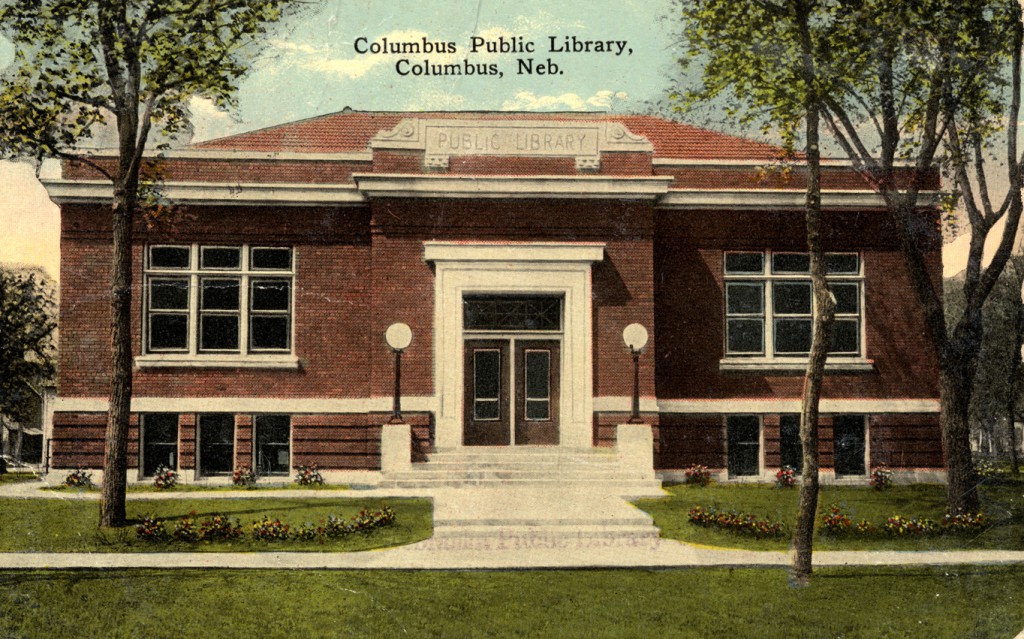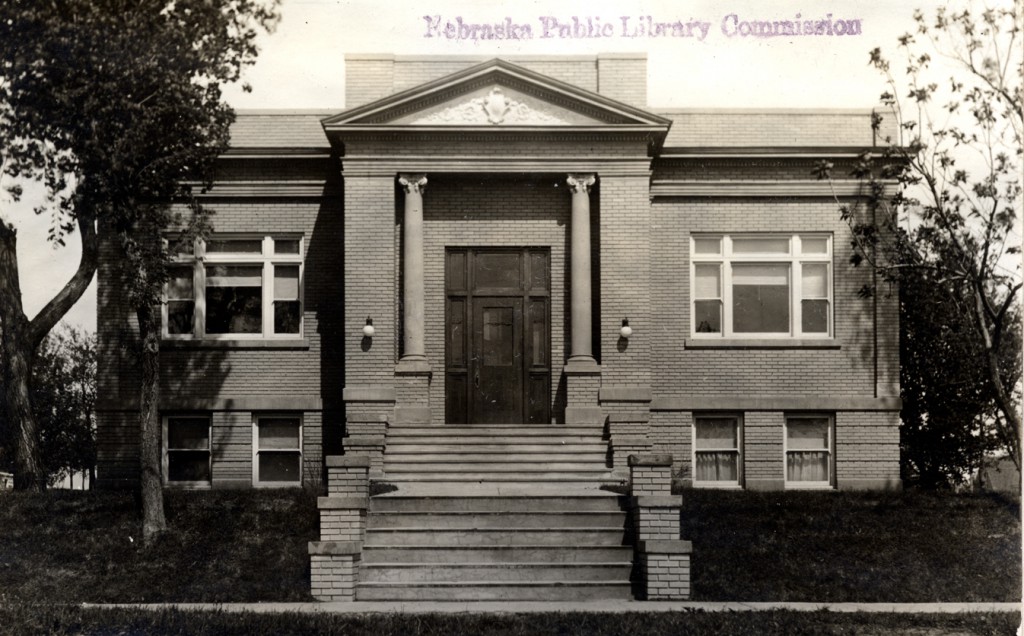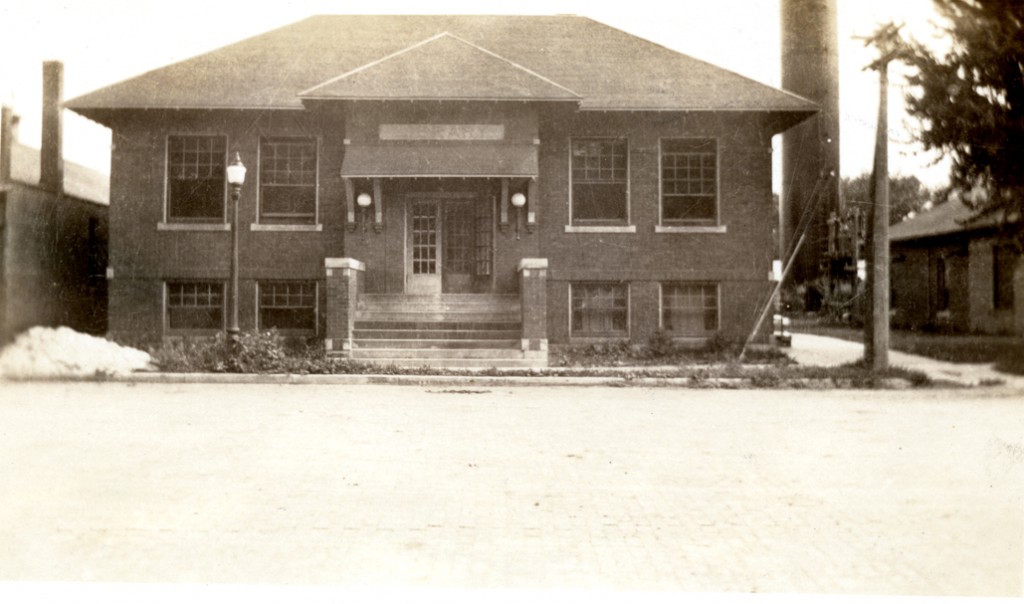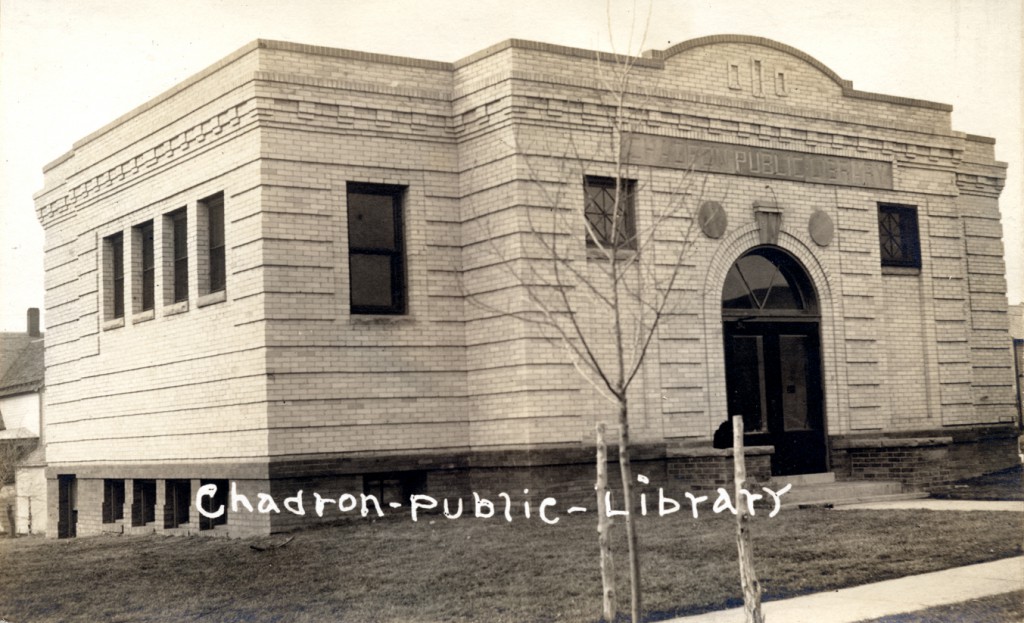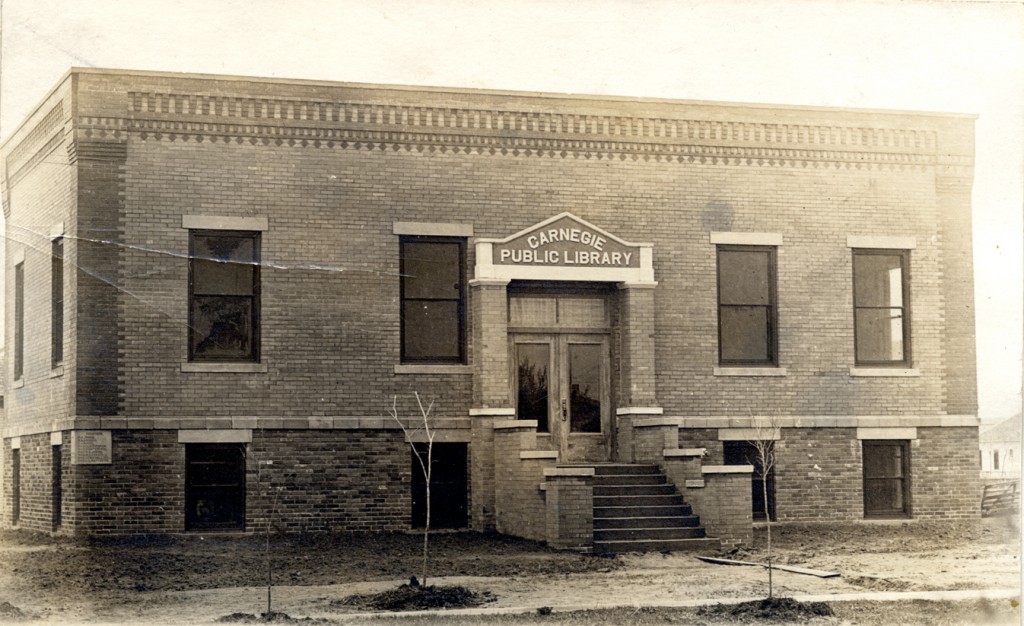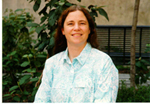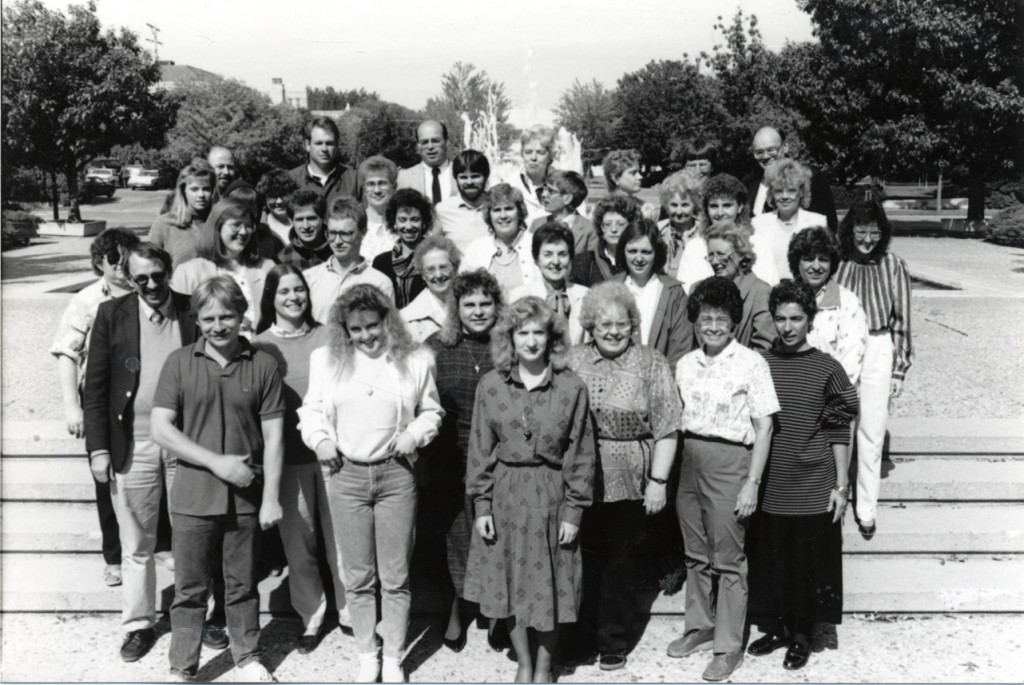Search the Blog
Categories
- Books & Reading
- Broadband Buzz
- Census
- Education & Training
- General
- Grants
- Information Resources
- Library Management
- Nebraska Center for the Book
- Nebraska Memories
- Now hiring @ your library
- Preservation
- Pretty Sweet Tech
- Programming
- Public Library Boards of Trustees
- Public Relations
- Talking Book & Braille Service (TBBS)
- Technology
- Uncategorized
- What's Up Doc / Govdocs
- Youth Services
Archives
Subscribe
Category Archives: General
Youth Grants for Excellence Applications due 10/2/15
The Nebraska Library Commission announces that grants are available to accredited public libraries and state-run institutional libraries for special projects in the area of children’s and young adult services. These grants are awarded to encourage innovation and expansion of public library services for youth and their parents or caregivers. Applications will be accepted for projects in an area that will benefit children and/or teens and which you see as a need in your community; for examples see the “Introduction” link below.
The Youth Grants for Excellence require a 25% match of the amount requested (grant amount), of which at least 10% must be a cash match. The minimum amount that will be awarded per grant is now $250. The $250 minimum grant amount plus the required 25% local match ($63) combine for $313 as the lowest total project amount for a Youth Grant for Excellence.
There are two different application forms. For projects requesting $250 – $1,000 in grant funds use the abbreviated, or short form. Applications requesting more than $1,000 must use the long form. Please be sure to use the correct form for your project. Please go to the “Introduction” page for links to the forms (at the bottom of the page).
Please note: AWE work stations, or similar stations of other companies, are allowed this year (2015) and then will no longer be eligible beginning in 2016.
You may also be interested in viewing the NCompass Live session from 8/20/14 titled “What You Need to Know to Apply for a Youth Grant.”
You are welcome to call or email Sally Snyder with questions or to ask for more information.
Posted in General, Youth Services
Leave a comment
The Data Dude – Basic Public Library Survey Guide
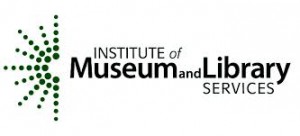 Shaka. The purpose of today’s post is to let you know about a new basic public library survey and Bibliostat™ guide that has been posted on the NLC website. If you are new to the IMLS public library survey or are looking for a brief refresher, this is a good place to start. Bibliostat™ is the data collection tool that Nebraska currently uses to collect data for the public library survey. States are free to use whatever method they choose; in Nebraska it is Bibliostat™. The aforementioned guide also has a bit of background about the public library survey, as well as the basic Bibliostat™ navigation. You can also print a copy of the survey and instructions from the data services section of the NLC website. This may help you to compile some of the data ahead of time, instead of scrambling around at the last minute. As always, if you have questions, don’t hesitate to ask.
Shaka. The purpose of today’s post is to let you know about a new basic public library survey and Bibliostat™ guide that has been posted on the NLC website. If you are new to the IMLS public library survey or are looking for a brief refresher, this is a good place to start. Bibliostat™ is the data collection tool that Nebraska currently uses to collect data for the public library survey. States are free to use whatever method they choose; in Nebraska it is Bibliostat™. The aforementioned guide also has a bit of background about the public library survey, as well as the basic Bibliostat™ navigation. You can also print a copy of the survey and instructions from the data services section of the NLC website. This may help you to compile some of the data ahead of time, instead of scrambling around at the last minute. As always, if you have questions, don’t hesitate to ask.
The Data Dude – Wednesday Watch: the Black
 Before the Dude explores this week’s Wednesday Watch, a shout goes out to Pete Kostelnick, a Lincolnite who won this year’s Badwater 135 Ultramarathon. The Dude has previously written about Badwater, and wants to acknowledge Pete’s accomplishment. The running world is yours, Pete. The rest of us just live in it.
Before the Dude explores this week’s Wednesday Watch, a shout goes out to Pete Kostelnick, a Lincolnite who won this year’s Badwater 135 Ultramarathon. The Dude has previously written about Badwater, and wants to acknowledge Pete’s accomplishment. The running world is yours, Pete. The rest of us just live in it.
Now today let’s take a look at two TV series offerings (available on DVD from your local library). The first, Orphan Black, is from BBC America (via the Canadian Space Channel), and the other, Black Mirror, is from British Channel 4. Orphan Black came highly recommended by a number of individuals, and the Dude was hyped up after a few episodes. Toward the end of season 1, his buzz was decimated. And thus, unfortunately, Orphan Black cannot be recommended. There are, however, some positives, but they don’t really outweigh the negatives. According to WorldCat, 5 public libraries have season 1 of Orphan Black. The premise of Orphan Black is this: A woman named Sarah sees another woman (Beth) commit suicide by jumping in front of a train. Just before the act, Sarah eerily notices that Beth looks identical to her. Immediately after the suicide, Sarah steals Beth’s identity and eventually discovers that not only are she and Beth clones, identical in appearance and genetic material, but there are numerous other clones in addition to the two of them. At first, the notion seemed intriguing, and this appeared to be a fresh new go-to show, but the feeling didn’t last. In fact, the Dude had placed a hold on the season 2 DVD’s, but returned them unwatched. Yes, it was that disappointing. Tatiana Maslany, the actress who plays the clones, does do an excellent job. The problem, however, has to do with what would be considered unrealistic script writing, introducing characters that otherwise appear quite reasonable and placing them in situations where they act quite unreasonable. The Dude found it not so much believable. But wait! Perhaps it is somewhat due to budget restraints. The same feeling of un-believability occurred when watching FX’s Sons of Anarchy. The show was intriguing, or a little above meh, but that’s about it. On the sci-fi front, because it seems like that is the theme here this week, the Dude is anxiously awaiting and has high hopes for HBO’s upcoming Westworld.
Compared to Orphan Black, the British Channel 4 series Black Mirror presents an entirely different level of exoticity. The Dude was disappointed to discover that no Nebraska libraries have season 1 of Black Mirror, and just 20 libraries in the world have it, according to WorldCat. Black Mirror would be a great choice to add to your library’s DVD collection. How to describe Black Mirror? Well, it’s often been said it’s like an updated, technologically marinated version of the Twilight Zone. That would be a fair assessment, along with the fact that it is often just plain creepy. Like, look over your shoulder if you are watching it late at night or Twin Peaks-y bad dreams after you watch it type creepy. Like that. And the Dude doesn’t generally like creepy things, because, well, they often result in the Dude feeling creepy, and the Dude doesn’t like that. The series creator, Charlie Brooker, asks the question: “If technology is a drug – and it does feel like a drug – then what, precisely, are the side-effects?” Black Mirror explores this premise, in the disconnected, dirty, and often hopeless way that technology sometimes leaves us feeling. Like the Twilight Zone or Alfred Hitchcock Presents, each episode stands on its own, with different characters in different situations.
One side effect of the show is that it does provoke thought about technology, its use, and its application, and (the Dude won’t sugar coat it), it often isn’t good. To a certain extent fear, loneliness, and disconnection married to technology breed a pessimistic cocktail indeed. At least technology has that potential; to feed the worst parts of our souls. OK, enough with the philosophical pessimism (the Dude has been reading Schopenhauer on and off this month), let’s tie this into libraries somehow.
The defining factor is that both the library of the 21st Century and even the critic of the 21st Century library often rely too much on technology as a solution to societal problems or even societal wants. While technology does play an important role (the Dude won’t argue that point), the library of the future should transcend it. It’s not an either/or proposition (as many see it), but rather a Ken Wilber-esque integral type of theory. We need not double-down on technology, but rather walk away from the casino with some real life human connection. In the age of what Brooker aptly refers to as the Black Mirror, we are often left with a numbness or certain icky-ness feeling that seems more like an infinite means to an end rather than the technology and human ends in themselves. Libraries may be able to help alleviate those feelings, but it has just as much (or more) to do with us than the library as a modern day institution, facilitator, place, or technology salesman. Outside of the running world (which belongs to Pete), it’s our world (and also the world of the hummingbird, butterfly, flower, sun dried tomato, and other such niceties and even not so niceties), and we all live in it. Shaka.
Posted in General, Library Management, Technology, Uncategorized
Leave a comment
Throwback Thursday: College View Carnegie Library.
Posted in General, Nebraska Memories
Leave a comment
The Data Dude – Virtual Visits (Revised)
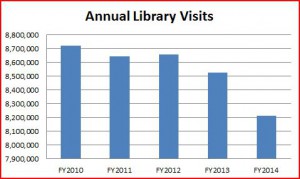 Shaka. Last week, I blogged about a new element on the public library survey asking you to report virtual library visits, and the definition I posted has been revised (and hopefully will provide some clarity). I’ve worked it over, and the revised language is below. For those of you that provided feedback, thank you! I hope to clear up the confusion in this post today, and will revise the earlier post to reflect the change in the question definition. I apologize for the confusion. Keep in mind that this is not a federally required question. If it is difficult or impossible for you to collect this data, you are free to enter a 0. However, my earlier blog post provided the background on why state data coordinators (SDC’s) believe collecting this data is important.
Shaka. Last week, I blogged about a new element on the public library survey asking you to report virtual library visits, and the definition I posted has been revised (and hopefully will provide some clarity). I’ve worked it over, and the revised language is below. For those of you that provided feedback, thank you! I hope to clear up the confusion in this post today, and will revise the earlier post to reflect the change in the question definition. I apologize for the confusion. Keep in mind that this is not a federally required question. If it is difficult or impossible for you to collect this data, you are free to enter a 0. However, my earlier blog post provided the background on why state data coordinators (SDC’s) believe collecting this data is important.
What we are trying to do is to capture the number of unique visitors to your website for a sample time period (each day), and then obtain an annual figure based on that sample. Now, what is a unique visitor? In short, if you have one person (as determined by their IP address) who accesses your website numerous times in one day, say 10 times, you count them once (even though they had 10 “user sessions”). If they come back tomorrow and do the same thing, count them again for that day. So every day, you start over with a new count of unique visitors to your site during the sample time period. You collect the number of unique visitors for a time period, for example, a month or “typical week”. If you’ve collected the data for a week, multiply by 52 for an annual figure, or if you’ve collected it for a month, multiply by 12. The goal here is to provide a decent balance and provide counts that are comparable to how you capture physical visits (or gate counts).
Here is the revised definition:
6.18. Total Annual Number of Virtual Library Visits to Library Website: Unique visitors is the number of inferred individual people as determined by IP address (filtered for spiders and robots), within a designated reporting timeframe (each day), with activity consisting of one or more visits to a site. Each individual is counted only once in the unique visitor measure for the reporting period, in this case, each day. The number of annual virtual visits can be calculated by summing the number of unique visitors each day for a one month time period. You may also report an annual figure based on a “typical week” (see definition below). Multiply by 52 weeks for an estimated annual total. A “typical week” is a week that is neither unusually busy nor unusually slow. Avoid holiday times, vacation periods for key staff, or days when unusual events are taking place in the community or the library. Choose a week in which the library is open its regular hours. Include seven consecutive calendar days, from Sunday through Saturday (or whenever the library is usually open).
Friday Reads: School for Brides & Keeping the Castle, by Patrice Kindl
I recently finished A School for Brides by Patrice Kindl, a new companion title to her Keeping the Castle which came out in 2012. I might be cheating by talking about two books, but they certainly go hand-in-hand.
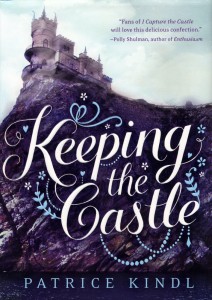 Keeping the Castle is reminiscent of Pride and Prejudice with a touch of Cinderella – due to stepsisters. Seventeen-year-old Althea knows the only way to save her family’s decaying castle, its grounds, and their tenants for her widowed mother and much younger brother is to marry well. The two unkind stepsisters living with them could contribute funds to reduce the costs but choose to complain instead. Althea has an unfortunate habit of speaking her mind which makes finding a suitor much more difficult; she would prefer to remain single if it wasn’t so necessary to wed. She does what she can to aid her new friend, Miss Vinchy, in finding a match, but doesn’t seem to make any progress for herself. Readers will see the possibilities long before Althea does, which adds to the fun. Romance, proper behavior of the time and surprises are included.
Keeping the Castle is reminiscent of Pride and Prejudice with a touch of Cinderella – due to stepsisters. Seventeen-year-old Althea knows the only way to save her family’s decaying castle, its grounds, and their tenants for her widowed mother and much younger brother is to marry well. The two unkind stepsisters living with them could contribute funds to reduce the costs but choose to complain instead. Althea has an unfortunate habit of speaking her mind which makes finding a suitor much more difficult; she would prefer to remain single if it wasn’t so necessary to wed. She does what she can to aid her new friend, Miss Vinchy, in finding a match, but doesn’t seem to make any progress for herself. Readers will see the possibilities long before Althea does, which adds to the fun. Romance, proper behavior of the time and surprises are included.
A School for Brides is set in the same time and place – the early 1800s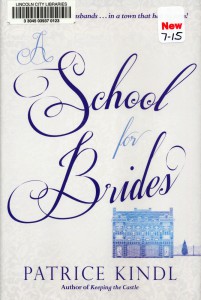 in the town of Lesser Hoo in Yorkshire England – and some of the characters from the first book make secondary appearances here. The eight young ladies of the Winthrop Hopkins Female Academy study their lessons in math, French, comportment and stitching; but their real purpose at the school is for each to find a husband. Too bad Lesser Hoo has only one sort-of-eligible bachelor. Things look up when a young well-to-do gentleman is thrown from his horse. A broken leg necessitates his stay at the school and soon some of his friends come to visit. Manners of the day, social standing, treatment of household staff and the winning or losing of ladies’ hands are all addressed. A couple of mysteries and some ne’er-do-wells in the mix make a humorous and gratifying tale.
in the town of Lesser Hoo in Yorkshire England – and some of the characters from the first book make secondary appearances here. The eight young ladies of the Winthrop Hopkins Female Academy study their lessons in math, French, comportment and stitching; but their real purpose at the school is for each to find a husband. Too bad Lesser Hoo has only one sort-of-eligible bachelor. Things look up when a young well-to-do gentleman is thrown from his horse. A broken leg necessitates his stay at the school and soon some of his friends come to visit. Manners of the day, social standing, treatment of household staff and the winning or losing of ladies’ hands are all addressed. A couple of mysteries and some ne’er-do-wells in the mix make a humorous and gratifying tale.
I greatly enjoyed both books, the setting, the humor, and the writing; the author has provided two enjoyable Jane Austen-like capers. They are a fun and lovely change from the many teen dystopia and/or killer suspense novels I have been reading lately. They will be enjoyed by teens and adults.
Throwback Thursday: Clay Center Carnegie Library.
Posted in General, Nebraska Memories
Leave a comment
Nebraska Writer Featured in Newseum Exhibit “Reporting Vietnam”
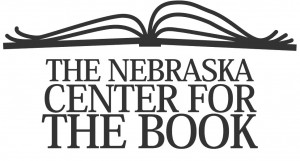
FOR IMMEDIATE RELEASE:
July 29, 2015
FOR MORE INFORMATION:
Mary Jo Ryan
402-471-3434
800-307-2665
Nebraska Writer Featured in Newseum Exhibit “Reporting Vietnam”
This year marks the 50th anniversary of the start of the Vietnam War, and the Newseum marks the date with a new exhibit exploring how the media reported the country’s first televised war. Photos, news footage, historic newspapers and magazines, music, and artifacts tell the story of a divided nation, and debunk some myths about the era. Nebraska writer Beverly Deepe Keever, author of the 2015 One Book One Nebraska: Death Zones & Darling Spies: Seven Years of Vietnam War Reporting is featured in one of the lead panels in this exhibit in Washington, DC. Keever, who was born and raised in Hebron, NE, was the longest-serving American correspondent covering the Vietnam War and earned a Pulitzer Prize nomination for reporting.
Set to a soundtrack of protest songs, the exhibit opens with an exploration of the culture clash that emerged in the 1960s as seen through mainstream and counterculture publications of the day. “Reporting Vietnam” challenges perceptions that linger fifty years after U.S. troops arrived in Vietnam, and poses the question “Did the press lose the war?” Find out more about the exhibit at http://www.newseum.org/exhibits/current/reporting-vietnam/.
The Nebraska Center for the Book, Humanities Nebraska, Nebraska Library Commission, and other statewide organizations sponsor One Book One Nebraska to demonstrate how books and reading connect people across time and place. For information about One Book One Nebraska, see http://onebook.nebraska.gov or join us on Facebook at http://www.facebook.com/OneBookOneNebraska.
The Nebraska Center for the Book is housed at the Nebraska Library Commission and brings together the state’s readers, writers, booksellers, librarians, publishers, printers, educators, and scholars to build the community of the book, supporting programs to celebrate and stimulate public interest in books, reading, and the written word. The Nebraska Center for the Book is supported by the Nebraska Library Commission. As the state library agency, the Nebraska Library Commission is an advocate for the library and information needs of all Nebraskans. The mission of the Library Commission is statewide promotion, development, and coordination of library and information services—bringing together people and information.
###
The most up-to-date news releases from the Nebraska Library Commission are always available on the Library Commission Website, http://nlc.nebraska.gov/publications/newsreleases.
Posted in Books & Reading, General
Leave a comment
The Data Dude – Virtual Library Visits
 In keeping with the theme of announcing new questions or changes to the annual public library survey, today will focus on what we call the virtual library visit. But first, the Dude must retract what has been previously written about the -1. While the -1 is code for “not collected” on your surveys when the data is submitted to IMLS/Census, a recent conversation with the Bibliostat people indicated that they prefer that you enter N/A if data is not collected. If the survey question is not coded to accept letters (only numbers), then enter a 0. They will then change the field to -1 when they compile the data. Sorry for the confusion.
In keeping with the theme of announcing new questions or changes to the annual public library survey, today will focus on what we call the virtual library visit. But first, the Dude must retract what has been previously written about the -1. While the -1 is code for “not collected” on your surveys when the data is submitted to IMLS/Census, a recent conversation with the Bibliostat people indicated that they prefer that you enter N/A if data is not collected. If the survey question is not coded to accept letters (only numbers), then enter a 0. They will then change the field to -1 when they compile the data. Sorry for the confusion.
OK, on to the virtual library visit. Some of the reasons for collecting library statistics from the annual public library survey include identifying trends and demonstrating the value of public libraries. The chart to the right shows the number of annual visits to Nebraska libraries from 2010 – 2014, and while it looks like there is a huge drop between FY2013 and FY2014, keep in mind that this is in millions, so the actual change isn’t really that drastic. But physical visits to Nebraska libraries have been declining. The question then is what about people who use library services remotely or who are “virtual visitors”. One example might be the person who wants to read a book but doesn’t feel like driving all the way to the library. They might download an eBook. What about the guy who streams a video from Hoopla from his home with the help of his library card? These are examples of a library providing a service without the person ever visiting the physical space. Another example might be the person who browses the library catalog from home, places a hold on an item, and then picks the item up. Before the availability of the virtual library visit, this person would need to go to the physical library, search the catalog, and if the item was not available place the hold from the library for a later pick up. Score: 2 physical visits in the old day, 1 physical visit in the new day. But the new day is equalized if we count the person’s website visit as a “virtual visit”, which is the idea behind capturing this data.
Many states are already collecting this data. Our question definition is modeled after theirs. It seems that the most difficult question (where states differ) is whether or not to count virtual visits from within the library (e.g. staff and computer lab hits). Our question doesn’t specifically say to exclude them. Mostly, the reason for this is that from a technological standpoint, it may be much harder to exclude them, especially for smaller libraries with limited IT departments. For those Nebraska libraries that are hosted by the Commission, our comp. team intends to prefill this data for you. Again, if you don’t collect the data or an estimate is not available, feel free to enter N/A (not -1). Here is the definition as it will appear on the survey:
6.18. Total Annual Number of Virtual Visits to Library’s Website: Virtual visits is the number of inferred individual people as determined by IP address (filtered for spiders and robots), within the reporting timeframe, with activity consisting of one or more visits to the library’s website. The number of unique visitors to the library’s website may be calculated by summing the number of unique visitors for each month to obtain an annual figure. A visit ends when someone closes their browser or stops loading web pages on a website for a period of time (typically when more than 30 minutes elapses between page views).
Shaka.
Posted in General, Library Management, Technology, Uncategorized
2 Comments
Symposium on Education in Nebraska: July 23, 2015
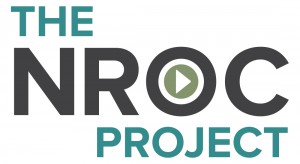 Along with Rod Wagner, Sherry Crow and Sally Snyder, I’m attending the Symposium on Education in Nebraska–and the focus is Opportunity and Access. There is a great deal of interest in how digital resources expand opportunities, and access is at the heart of this. And since libraries are all about access, we can be at the center of this movement.
Along with Rod Wagner, Sherry Crow and Sally Snyder, I’m attending the Symposium on Education in Nebraska–and the focus is Opportunity and Access. There is a great deal of interest in how digital resources expand opportunities, and access is at the heart of this. And since libraries are all about access, we can be at the center of this movement.
Dr. Gary Lopez, presented the keynote address on the NROC project to develop and distribute digital resources for education—lessons, courses, curricula. He stressed that the project has an open access philosophy, developing digital resources for millions of students from middle school to college.
NROC http://www.thenrocproject.org ) developed specific digital resources & curriculum…Math and English for starters…to address the achievement gap in education. Addressing achievement gap by transitioning the one-size-fits-all system of education to an adaptable system…from analog to digital should mean that learning can be personalized to individuals—assuring that student feedback drives repetition to address specific gaps. Personalized learning is adjusting the pace (individualization), approach (differentiation) and connection to the student’s learning interest and experiences. Resources are available through hippocampus.org and edready.org. Comment below about your reaction to the library role in this evolving change in education and learning.
About NROC
“NROC” started as the National Repository of Online Courses. Now we are much more. The NROC Project is a national, non-profit movement impacting college & career readiness. Our project is funded by the Bill & Melinda Gates Foundation, The William and Hewlett Foundation, and most importantly by NROC members across the country. Our member institutions represent more than 6 million students from middle school to college across the U.S. We are leaders who believe in open and equal access to education and the power of new media to personalize learning. Together, we’re building content and applications to impact student success and delivering them publicly at websites like HippoCampus and EdReady.
The Data Dude – Reporting Electronic Stuff Pt. 2
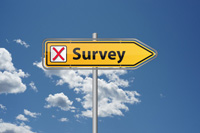 Last week we looked at reporting electronic stuff (mostly eBooks and Audiobooks) on the annual public library survey. This week will focus on one particular aspect of that, called electronic collections. Now historically the public library survey has had questions about databases. These include the databases provided by the Library Commission (NebraskAccess) and any databases offered locally by the library. So first off, what is a database? Well, a database is generally an electronic (online these days) catalog or index that contains information about published items, and in most (but not all) cases, the items themselves. This might include journal articles, magazines, newspapers, reference information (including images and video), books, or other documents (e.g. the historical Census records from the My Heritage database on NebraskAccess would be an example).
Last week we looked at reporting electronic stuff (mostly eBooks and Audiobooks) on the annual public library survey. This week will focus on one particular aspect of that, called electronic collections. Now historically the public library survey has had questions about databases. These include the databases provided by the Library Commission (NebraskAccess) and any databases offered locally by the library. So first off, what is a database? Well, a database is generally an electronic (online these days) catalog or index that contains information about published items, and in most (but not all) cases, the items themselves. This might include journal articles, magazines, newspapers, reference information (including images and video), books, or other documents (e.g. the historical Census records from the My Heritage database on NebraskAccess would be an example).
Now, the intent of some state data coordinators (SDC’s) was to broaden this definition a bit to include things that might not technically fit into the historical database mold, but don’t necessarily fit anywhere else either. These include things like Freegal, Zinio, Mango Languages, TumbleBooks, Tutor.com, and many many others. So someone proposed changing the definition from “database” to the broader “electronic collection” (although arguably these could all fall under the database umbrella, and many SDC’s make the argument both ways), and then capturing the number of times the electronic collection is used. Oddly, the SDC’s voted to change the definition of a database to the broader electronic collection, but not to capture or report the number of uses. To the Dude, it doesn’t matter much if you call it a database, electronic collection, or a duck, the real question is what is it and whether or not it is valuable. It also might be useful to know what kind of duck or ducks they have next door, in case you want to avoid duplicating the Joneses, or just want to keep up with them.
To the Dude (and on the state level), it seems important to know what databases…ahem, electronic collections, that libraries subscribe to, and to know how many times they might be used. When looking at something like Freegal or Zinio, the number of uses seems simple – each downloaded item counts as a single use. It gets much more complicated when discussing other electronic collections such as Ebsco or Mango Languages, because you don’t want to count each search as a use. It seems more relevant to count each log-in as a session. Someone logs in for a half-hour to work on Mango Languages? Count it as one use. Someone spends an hour on Ebsco, count it as a use. Well, technically and if possible from the reporting scheme, you could count each article downloaded as a use. 1 download = 1 use. If you count the download as a use, don’t double count the session as a use.
So this year, while you will report the number of local electronic collections (and we will prefill the number available via NebraskAccess) there will be a question that asks to list the names of the electronic collections you subscribe to. Note that you don’t include collections that are freely available on the web. There will be an optional question that will allow you to report the number of uses. This will be set up as a “repeating group”. In other words, you can enter “Zinio” for the electronic collection and then enter the number of times it was used. Next, you can add another electronic collection (group) and the number of uses. If you don’t have the data for the number of uses, you can just list the database titles (e.g. Zinio, Mango Langauges, Tutor.com, etc.). You could also enter the number of uses for one but not another (e.g. Freegal may be easier to report useage than Ebsco). Now, don’t get bent out of shape, the number of uses is optional. If you don’t know or you didn’t collect the data, enter N/A and a note in the note field that says “not collected” or “data not available”.
You should note that this applies to things that are kept by the library patron. Things that are returned (e.g. eBooks that are “returned”) are reported in a different area, covered in last week’s blog post, Reporting Electronic Stuff Pt. 1. Shaka.
Gov. Ricketts Names Appointments to Nebraska Library Commission
FOR IMMEDIATE RELEASE
July 22, 2015
FOR MORE INFORMATION
Mary Jo Ryan
402-471-3434, 800-307-2665
Gov. Ricketts Names Appointments to Nebraska Library Commission
Gov. Pete Ricketts recently appointed Susan Warneke, of Norfolk, and Debby Whitehill Bloom, of Omaha, to three-year terms on the Nebraska Library Commission. Gov. Ricketts also reappointed Mary A. (Molly) Fisher, of Lincoln, to a second three-year term on the Nebraska Library Commission.
Susan Warneke is the Music Director at Christ Lutheran Church in Norfolk. She received a bachelor’s degree in elementary education from Concordia College in St. Paul, MN. Susan taught in Lutheran schools in Michigan and Norfolk, NE for twenty-five years. She has been involved with libraries for many years, working as a page while in high school and serving as the student coordinator in the library children’s department in college. She formerly served on the Norfolk Public Library Board of Trustees and is currently a member of the Norfolk Library Foundation Board. Warneke recently chaired the successful Vote Yes for the Library ballot issue for expansion of the Norfolk Public Library.
Debby Whitehill Bloom is an entrepreneur with an MBA in finance and management from the University of Nebraska Omaha. She is the owner of Whitehill Bloom Consulting, LLC, which provides recruiting services for national insurance institutions. Debby holds a Nebraska Life and Health insurance license. She worked in marketing and accounting for Enron/Northern Natural Gas for eighteen years. She volunteers with King of Kings Church, Republican Party of Nebraska, Alpha Xi Delta, and Omaha Liberty Ladies. Debby Whitehill Bloom is the author of two books: Wisdom, Whimsy and Drivel, an inspirational poetry book and Fall Textures, a children’s picture book. She is also working on other children’s books.
Molly Fisher served as deputy director of the Nebraska Humanities Council until her retirement in 2000. She is a founding member of the Nebraska Center for the Book and is currently an ex-officio board member. She also serves on the board of the Nebraska Literary Heritage Association. She received the Mildred Bennett award, Lincoln Arts Council award for literary contributions, and a Nebraska Arts Council Award. Molly and her husband volunteered with state parks across the country, with a special interest in volunteering at lighthouses.
As the state library agency, the Nebraska Library Commission is an advocate for the library and information needs of all Nebraskans. The mission of the Library Commission is statewide promotion, development, and coordination of library and information services, “bringing together people and information.”
###
The most up-to-date news releases from the Nebraska Library Commission are always available on the Library Commission Website, http://nlc.nebraska.gov/publications/newsreleases.
Posted in General
Leave a comment
National my Social Security Week, July 19-25
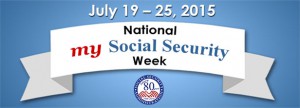 Social Security is excited to announce that July 19-25, 2015 will mark the second National my Social Security Week. During this week, Social Security will host numerous events and activities across the country to raise awareness about the benefits of having a my Social Security account and to encourage the public to sign up for their account at mySocialSecurity.
Social Security is excited to announce that July 19-25, 2015 will mark the second National my Social Security Week. During this week, Social Security will host numerous events and activities across the country to raise awareness about the benefits of having a my Social Security account and to encourage the public to sign up for their account at mySocialSecurity.
Libraries can partner with Social Security by helping to promote and ensure that Americans sign-up for their own mySocialSecurity account. Here are the resources to help you help the people you support. We encourage you to use the information and resources found at my Social Security Information for Groups and Organizations: Learn more about Social Security, Banners and Web Graphics, Newsletter Articles & Blog Posts, Social Media, Fact Sheets and Publications, Posters, Public Service Announcements for Radio, Videos, and a Toolkit.
The Data Dude – Reporting Electronic Stuff Pt. 1
 One of the difficult parts of the annual public library survey has not just been what to count, but where to report what is counted. This is true for reporting revenue, expenditures, staffing, and other things, but the focus here today is where to count electronic stuff. While it is relatively easy to count print materials (books and serials), audio physical materials (CD’s and playaways), and video physical materials (DVD’s or VHS for the old skoolers), counting the downloadable versions of those items and other electronic things becomes a bit trickier.
One of the difficult parts of the annual public library survey has not just been what to count, but where to report what is counted. This is true for reporting revenue, expenditures, staffing, and other things, but the focus here today is where to count electronic stuff. While it is relatively easy to count print materials (books and serials), audio physical materials (CD’s and playaways), and video physical materials (DVD’s or VHS for the old skoolers), counting the downloadable versions of those items and other electronic things becomes a bit trickier.
More and more often libraries are offering online access to things, including language and other educational courses, music and video downloads, downloadable magazines, and others. Now, when considering reporting these types of things, the key element here is to first ask this question: Is the electronic stuff checked out and returned (even if the return is that it magically disappears from your device after a set checkout period)? If so, then most of the time these are reported under one of three holdings categories on the survey: (1) eBooks; (2) Audio Downloadable Units; or (3) Video Downloadable Units. These are all reported on your survey in section 4, Library Services. The kicker here is that if you report these electronic items in the holdings part of the survey (section 4), you also need to report the number of times they are used (circulation), in section 5, Library Services, and vice versa. This represents a slight change in the data element definition in previous years, due to a vote by state data coordinators. Example: You report x number of OverDrive holdings, and x number of circulations. It gets tricky when we consider content that has a set circulation period but the library doesn’t select the items available to the user. Hoopla would be a good example of this, where the library pays for access to the vast quantity of items in the Hoopla collection, and then pays per item downloaded by the patron. The patron selects the item they want to read, watch, or listen to. This is well known as “patron driven acquisition”, and makes sense in that the library isn’t purchasing things that might sit on the shelf collecting dust or just infrequently used. Now for these things, reporting holdings is a bit tricky because even though the user may have access to millions of items, the library only pays for items that are downloaded or used. In this case, the holdings information can be reported in a reverse-engineered fashion based on the number of uses. You have 10,000 eBooks downloaded in the FY (out of 1.2 million available)? You report 10,000 eBooks held, and 10,000 uses. The Dude doesn’t know any other way to report this. Keep in mind that the important number here is the uses, so don’t get too caught up on the holdings reporting. And this only applies to things that circulate all the way around (e.g. are “returned”)
This post is part 1 of reporting electronic stuff. Part 2 will explain the data element changes for databases, which have been re-named “electronic collections”. Shaka.
New State Agency Publications Received at the Library Commission
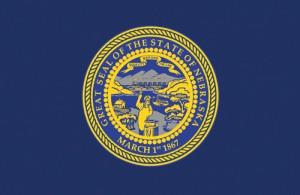 New state agency publications have been received at the Nebraska Library Commission for June 2015. Included are titles from Nebraska Department of Agriculture, Nebraska Department of Health and Human Services, Public Power, and University of Nebraska Press, to name a few.
New state agency publications have been received at the Nebraska Library Commission for June 2015. Included are titles from Nebraska Department of Agriculture, Nebraska Department of Health and Human Services, Public Power, and University of Nebraska Press, to name a few.
What’s Sally Reading?
If you are interested in book talks but don’t have time to write them all yourself, visit Nancy Keane’s website. Click on “New This Month” on the left and you will find ways to search the database on the left. You can choose searching by author or by title, as well as a subject list. If you are more interested in seeing what is new to the site you can click on the month by month listing in the main area of the page. She welcomes everyone to contribute a book talk and to use any that are there. Some books have several book talks written by different people. There are plenty of titles, picture books on up to young adult choices.
The Library Commission owns several titles about booktalks by Joni Richards Bodart, the first person to write about booktalking, including Booktalk!, Booktalk! 2, and the more recent Booktalk! 5, about how to write booktalks and how to present them as well as having samples if you are looking for something to help you get started. Good luck!
 In Wolfie the Bunny by Ame Dyckman, the Bunny family finds a basket on their doorstep with a wolf cub in it. Mom & Dad are thrilled. Daughter, Dot, exclaims, “He’s going to eat us all up!” but the parents continually ignore her. Finally, one day at the market, it looks like her prediction is coming true (by this time Wolfie is wearing a pink bunny suit) but instead it is bear who wants to eat Wolfie. Dot to the rescue! Sibling rivalry, cleverness and courage, and family love are at the heart of this story. This picture book will capture readers’ attention, especially when the bear appears!
In Wolfie the Bunny by Ame Dyckman, the Bunny family finds a basket on their doorstep with a wolf cub in it. Mom & Dad are thrilled. Daughter, Dot, exclaims, “He’s going to eat us all up!” but the parents continually ignore her. Finally, one day at the market, it looks like her prediction is coming true (by this time Wolfie is wearing a pink bunny suit) but instead it is bear who wants to eat Wolfie. Dot to the rescue! Sibling rivalry, cleverness and courage, and family love are at the heart of this story. This picture book will capture readers’ attention, especially when the bear appears!
(The Nebraska Library Commission receives free copies of children’s and young adult books for review from a number of publishers. After review, the books are distributed free, via the Regional Library Systems, to Nebraska school and public libraries.)
Posted in Books & Reading, General, Youth Services
Leave a comment
